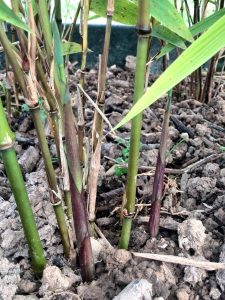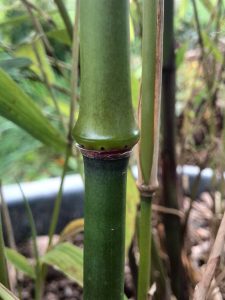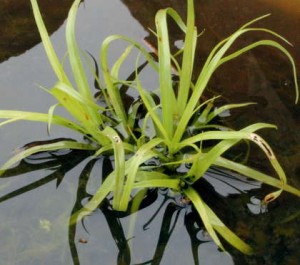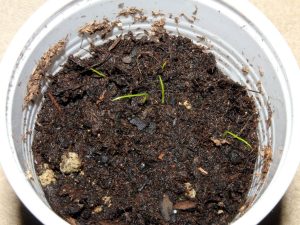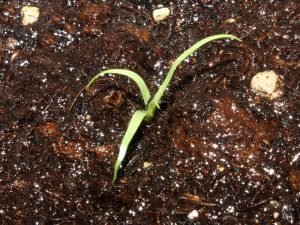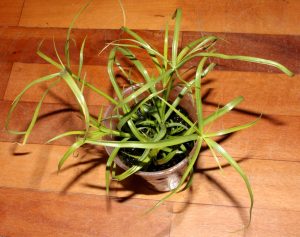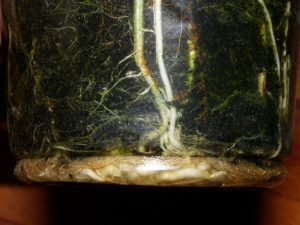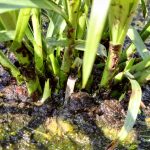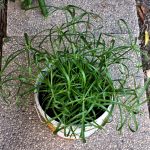Chimonocalamus pallens

I received a package of Chimonocalamus pallens seeds as a gift from a friend with a flowering bamboo. If you are reading this, thank you again!
This bamboo doesn’t like cold winters, which are common around here. That means it’s most likely condemned to become an indoor plant that will get outside in late spring and back inside when it gets cooler in autumn. Like most bamboos, Chimonocalamus pallens likes moist but not wet soil. It tolerates strong sun and should be quite heat tolerant, which could prove useful during the summer months.
Basic information:
| Height: 8 m Culm diameter: 3.8 cm Hardiness: -9 °C Characteristics: node thorns, upright growth, clumping bamboo, sun tolerant |
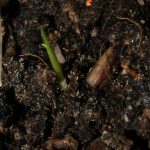
Seeds started germinating on August 26th (2012). Out of 5 seeds from first batch, 3 managed to poke out of the soil after germination. Sadly, two of the seedlings died shortly after, due to slug damage. I knew I should sterilize the soil before I planted them … At first, pallens seedlings are slow to get going, but with time, growth rate accelerates and new shoots become more and more vigorous.
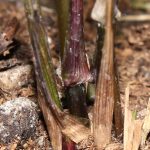
Compared to Phyllostachys pubescens Moso seedlings or Borinda fungosa, which I also tried growing from seeds, Chimonocalamus pallens needed much more attention. It might be soil related, but it seems that if Moso seedlings are picky when it comes to nutrients and nutrient availability, pallens is even worse. After first couple of leaves, they begin to look pale and started loosing old leaves. Most of the seedlings had shown old culm death after they managed to shoot and despite that, they started growing faster. When shooting started, seedlings had shown leaf deformations, similar to those on Borinda fungosa seedlings. Culm tips on old stems often died off to provide more nutrients to newly growing shoots. Adding fertilizer seems to improve this deficiency. I tried adding Epsom salts, iron oxide (water with rust particles in it) and common water soluble liquid fertilizer with high nitrogen content. Foilage got greener and plants looked healthier. Growth, however, didn’t accelerate.
Seedlings were placed outside after it got warmer, but soon, they got hit by strong wind, hail, torrential rain, strong sun and unbelievably cold weather. Growth stunted completely, but they should start growing again when things get back to normal.


With warmer summer weather, seedlings started to take off, but were then again stunted by heat and strong sun exposure. Seedlings were placed into protected place in full sun, with added protective mesh that blocked direct sun. Most of them had shown little if any stress, but overall, there was not much growth during the summer. Things changed again when temperatures dropped again and rain started to fall on a regular daily basis. New shoots appeared on most of the seedlings in early September. When compared to other bamboo seedlings I’ve grown, these had shown much less vigor during their first year. Test seedling got nearly killed during the summer, but it started showing signs of life after I placed it out of the pot into shaded spot. I will most likely leave it there for the winter to see how cold hardy it actually is.


During the winter, bamboos were kept in their original undersized pots and they were not enjoying their warm and dry environment. Due to lack of light, autumn shoots became tall and fragile, most of them suffered at some point and their tops dried out or break – then dry out. Freezing temperature top killed test seedling that was kept outside in the ground, but when I pulled it out, I did notice some fresh roots and even emerging shoots. I’ll see if it can recover.
It all seems that Chimonocalamus pallens seedlings can withstand dry and hot conditions better than most similar clumpers (Borinda, Fargesia or Yushania), but will need a lot of light to continue with healthy growth. The second reason of their current condition was lack of soil in their pots. They shared pots that were shallow, with minimal space for their root system to establish. I’ll try to get them going again, when they recover I’ll plant them seperately into larger containers, now they are all together planted into aged compost.
